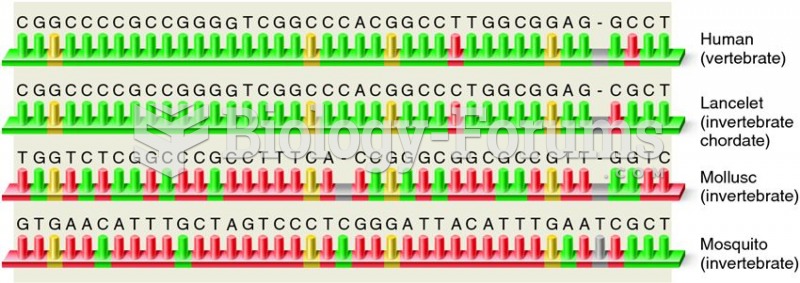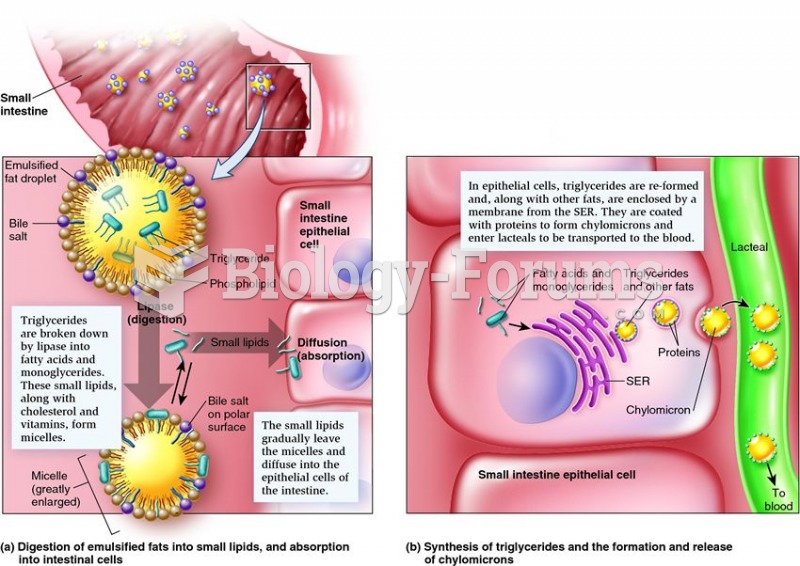This topic contains a solution. Click here to go to the answer
|
|
|
Did you know?
Blood is approximately twice as thick as water because of the cells and other components found in it.
Did you know?
In 1886, William Bates reported on the discovery of a substance produced by the adrenal gland that turned out to be epinephrine (adrenaline). In 1904, this drug was first artificially synthesized by Friedrich Stolz.
Did you know?
People about to have surgery must tell their health care providers about all supplements they take.
Did you know?
By definition, when a medication is administered intravenously, its bioavailability is 100%.
Did you know?
Nitroglycerin is used to alleviate various heart-related conditions, and it is also the chief component of dynamite (but mixed in a solid clay base to stabilize it).
 Comparison of small subunit rRNA gene sequences of vertebrate, invertebrate chordate, and invertebra
Comparison of small subunit rRNA gene sequences of vertebrate, invertebrate chordate, and invertebra
 Technology has changed our lives fundamentally. The connection to each telephone call used to have ...
Technology has changed our lives fundamentally. The connection to each telephone call used to have ...





